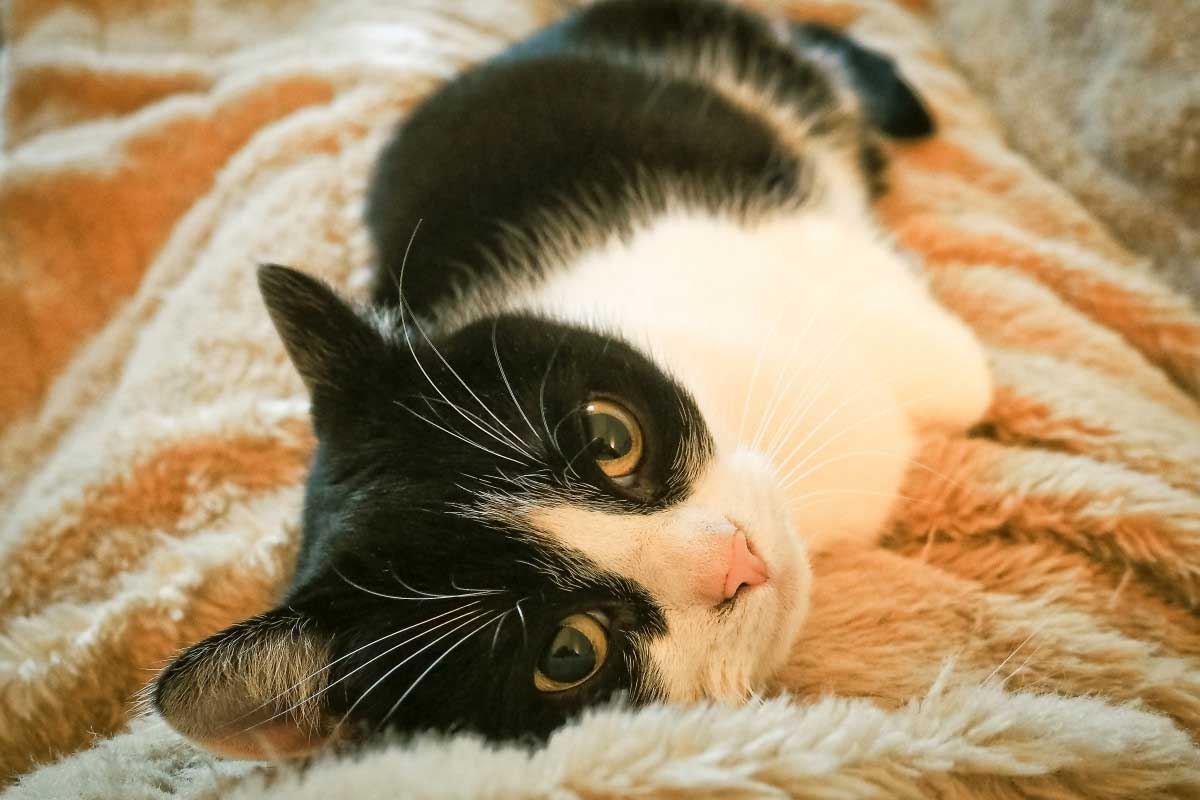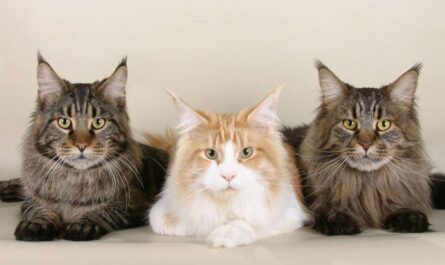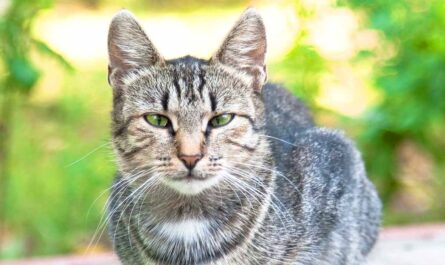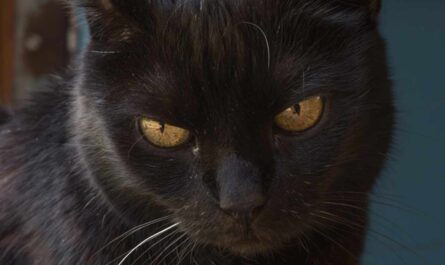What are some of the signs of separation anxiety in cats and what to do? Cats, renowned for their self-reliance, sometimes find themselves grappling with loneliness and separation stress when distanced from their human companions. A recent study unveiled that approximately 13 percent of cats exhibit behaviors intertwined with separation stress. Notably, the onset of the pandemic and the ensuing shifts between working from home and returning to traditional workplaces appear to have intensified this phenomenon. Cat accessories on Amazon Delving into the intricacies of separation stress in cats, we unveil its triggers and potential remedies.
Unmasking Separation Stress
Separation-related stress materializes when cats, bereft of their human caregivers, undergo a series of stress-related responses. See why thousands of cats love BoxCat. These responses, though typically more discreet than their canine counterparts, stem from the deep social bonds cats form within their human families. These bonds render them susceptible to stress, particularly when left alone for extended durations.
Research has delineated two primary attachment styles observed in cats:
Secure Attachment: In this scenario, a cat manifests low-stress levels during their human absence and does not exhibit an overwhelming urge for attention upon reunion. Fish and Fishing accessories.
- Insecure Attachment: Within this category, various manifestations surface:
- Ambivalent Cats: These felines cling fervently to their owners, seeking perpetual proximity.
- Avoidant Cats: Displaying a degree of aloofness, these cats may shun human interaction.
- Disorganized Cats: Their behavior oscillates between attachment and detachment.
Spotting Attachment Styles and Stress
Deciphering whether your cat boasts a secure or insecure attachment involves keen observation. To unveil the presence of separation-related stress, focus on behavioral and physiological indicators:
Behavioral Symptoms:
- Excessive vocalization
- Inappropriate elimination
- Overzealous grooming
- Destructive clawing
- Heightened clinginess and attachment
- Withdrawn behavior
- Unusual jubilation upon your return
Physiological Signs:
- Altered appetite
- Episodes of vomiting
- Diarrheal episodes
Notably, these symptoms vary in visibility; some may manifest overtly in your presence, while others only surface when you’re away. For instance, your once-silent companion might commence ceaseless meowing, forsake the litter box, or doggedly tail you around the abode.
Furthermore, cats grappling with stress may engage in excessive self-grooming, leading to hair loss and skin complications. Pet accessories on Amazon. Dietary patterns may also fluctuate, with some cats refraining from eating altogether or, conversely, gobbling their food hastily, resulting in digestive issues. The ramifications of separation-related stress extend beyond the behavioral realm, significantly impacting your cat’s health and overall quality of life.

Diagnosing and Unraveling the Triggers
The diagnosis of separation stress typically involves a process of exclusion, wherein other potential causative factors are ruled out by your veterinarian. Cat accessories on Amazon. Before attributing your cat’s behavior solely to separation issues, a comprehensive veterinary examination should be conducted to eliminate underlying medical ailments.
Multiple triggers can precipitate separation stress in cats, with unique predispositions and susceptibilities for each feline. Genetic factors intermingle with environmental variables in this complex equation. Certain cat breeds, such as Siamese and Burmese, demonstrate a proclivity towards experiencing separation stress.
Environmental factors also exert a significant influence. The following circumstances are frequently associated with the emergence of separation-related issues:
- Orphaned kittens or those separated from their littermates at a tender age.
- Kittens reliant on bottle-feeding or prematurely weaned.
- Cats exclusively reside indoors.
- Single-human households.
- Sole pets in the household.
- A paucity of mental and physical stimulation.
- Limited socialization opportunities.
Additionally, specific events or experiences can serve as catalysts for separation stress, including alterations in the environment or daily routine, noise aversions, prolonged solitary confinement leading to boredom, and exposure to stressful incidents during the early socialization period.
Lastly, our own actions and emotional dispositions can inadvertently exacerbate our cat’s separation stress. When we stand as the exclusive source of social engagement for our cats, our responses—whether through affection or the dramatization of our departures and returns—can reinforce needy and clingy behavior. Cats are astute at detecting our emotional states; thus, if we emanate stress or anxiety regarding our departures, our feline companions may mirror these sentiments and harbor negative associations with our absences.
Aiding Your Beloved Feline Companion
Witnessing your cat succumb to profound distress each time you depart from home can be a heart-wrenching experience. Separation-related stress looms as a formidable adversary, demanding a concerted effort to unearth its core triggers and alleviate your cat’s stress, ultimately fostering a sense of confidence and tranquility in its solitude. Dog accessories on Amazon. To mitigate your cat’s separation anxiety, consider implementing the following strategies:
1. Auditory Companionship
– Leave the radio or television tuned to a familiar station, creating an ambiance of continuity and reassurance in your absence.
2. Discreet Comings and Goings
– Endeavor to maintain low-key departures and arrivals, effectively eradicating departure cues that might precipitate unease.
3. Stimulation and Engagement
– Supply your feline friend with an array of toys and puzzles, with a particular emphasis on food-dispensing contraptions. These tools channel their innate predatory instincts, impart mental stimulation, and serve as diverting distractions.
4. A Refuge of Solace
– Designate a secure haven within your abode, be it a lofty perch or a cozy nook, where your cat can seek solace and serenity.
5. Aromatherapy for Cats
– Harness the calming influence of room diffusers or feline pheromones, which infuse the environment with a soothing scent that lends comfort to your cat.
6. Gradual Absence Training
– Embark on a regimen of gradual absences, commencing with brief intervals and progressively extending the duration. This gradual acclimatization can help alleviate your cat’s separation anxiety over time.
For more severe instances of separation stress, some conscientious cat parents resort to enlisting the services of a professional pet sitter or enlisting the aid of friends or family to provide companionship during their absence. See why thousands of cats love BoxCat. It is essential to comprehend that these measures primarily serve as temporary management techniques and do not contribute to resolving the underlying issues fueling your cat’s distress.
Preventing Separation Stress
Is it possible to preempt separation-related stress in your cat’s life? Indeed, early intervention to cultivate your cat’s comfort with solitude can be remarkably effective. Here are some proactive steps to consider:
1. Pioneering Experiences
– During your cat’s formative kitten stage, expose them to a diverse array of individuals, possibly including other pets. Bird accessories on Amazon. These early encounters during critical developmental phases cultivate confidence and ease in various scenarios, including solitude.
2. The Power of Predictability
– Foster stable household routines and structured periods away from your cat. The inherent predictability in their daily life helps render their absences routine, minimizing the potential for upheaval.
3. Encouraging Autonomy
– Foster a sense of independence in your cat. Encourage them to explore the house autonomously. Reward their self-sufficiency with hidden treats or special toys imbued with delectable morsels. Maintain a calm demeanor during departures and arrivals, refraining from making a fuss.
4. Mind and Body Stimulation
– Facilitate ample exercise and mental engagement, both in your presence and absence. A well-stimulated cat is more resilient to separation-related stress.
5. Sanctifying Home Space
– Create an environment wherein your cat feels secure and content. Provide them with a designated sanctuary, whether a lofty perch or a cozy nook, where they can find comfort and solace.
Investing in the prevention of separation stress and acquiring proficiency in addressing Cat accessories on Amazon situational stress will not only mitigate stress and heartache for both you and your feline companion but also nurture a harmonious coexistence.
More Interesting Articles
- 13 Very Interesting Facts About an Orange Tabby Cat
- Maine Coon Cat Breed: Traits, Profile, Personality, Facts
- 13 Interesting Fun Facts about Siamese Cats & Kittens
- 7 Amazing Light Brown (Beige) Cream Cat Breeds
- 10 Amazing Blue Cat Breeds with Short or Long Hair
- 11 Interesting Facts about a Cream Cute Tabby Cat
- 13 Common Symptoms of A Dead Kitten Inside A Cat
- Neutering Male Cats: Behavior and Recovery Guide
- How to Help a Choking Cat: Signs, Precautions, Tips
- Cat Dry Heaving: Cat Gagging Causes and What to Do
- Why is My Cat Panting? Symptoms, and Treatment
- 26 Tips How to Train A Cat Not to Scratch You or Anything
- Everything You Need to Know about Owning A Cat: 23 Facts
- How to Easily Train Your Cat to Use Toilet in One Week
- 10 Steps How to Train A Kitten to Use A Litter Box in a Week
- 10 Tips How to Train A Cat to Walk On a Leash in A Week
- 6 Steps How to Train A Cat Not to Bite Your Hand or Skin
- 6 Steps How to Get My Cat to Stop Jumping on the Counter
- 8 Tips on Introducing A New Dog to A Cat Step By Step
- 27 Tips How to Train An Outdoor Cat to Stay Home



